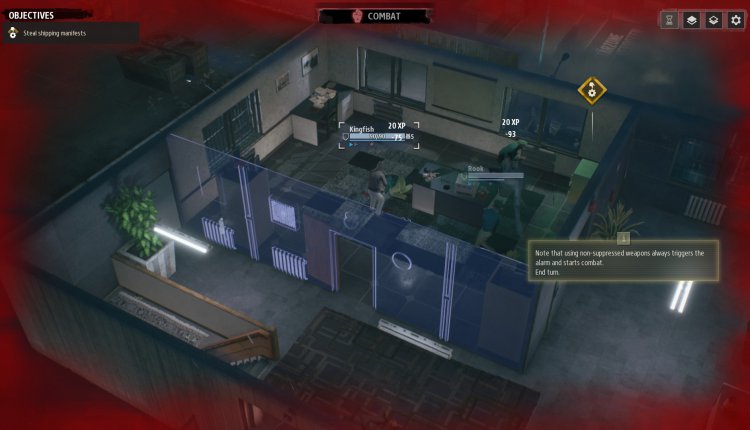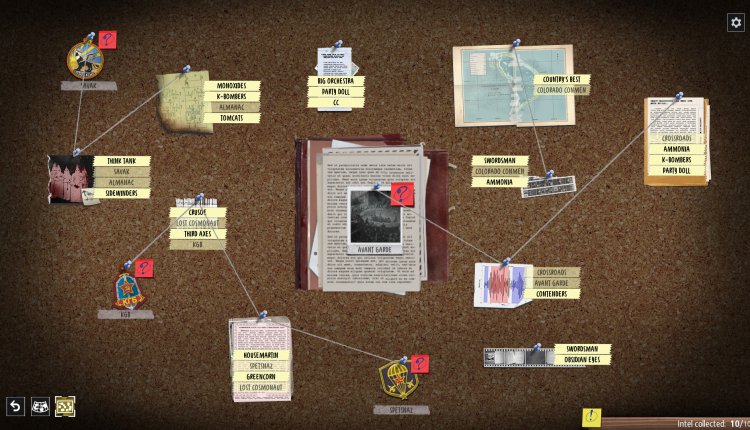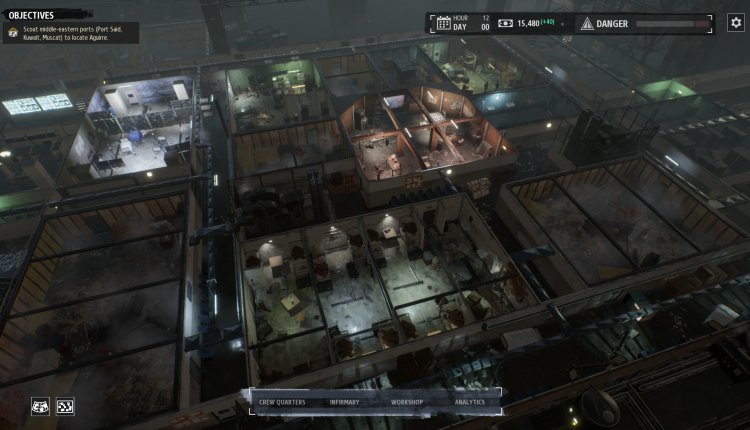Phantom Doctrine invites you to save the world from the shadows.
For a Cold War, there sure were a lot of firefights.
It’s a well-established fact that I like XCOM. Whether it’s the original games that stole heaps of my childhood, or the fantastic remakes, I have a serious soft spot for the series. I even liked XCOM: Interceptor. So, when I was offered the chance to play Phantom Doctrine, from Creative Forge, I was more than happy to give it a go. XCOM style gameplay with a Cold War theme? Yes, please!
Right from the outset, the influences are clear. In the set-up for the game, we have options for Ironman mode alongside the difficulty options all based on familiarity with games of this style. You then have a character creator which also seems immediately familiar, although it does lack some of the sillier options. From here you are dropped into a tutorial for the tactical battles, one that also sets up the game’s plot which focuses on a global conspiracy that seeks to destabilise the East and West at the height of the Cold War. I’ll avoid going any further for fear of plot spoilers.
The game is split into two sections: the strategic world map, and the tactical battles. The world map has you managing your spies, your facility, and the unravelling of conspiracies. Your facility is split into several sections. The workshop allows you to assign agents to create new equipment, as well as research upgrades for your facility and agents. There’s also the infirmary for healing your characters, and others that will unlock as you use the workshop. The crew quarters allow you to level up your agents, manage their equipment, and hire new recruits. Agents have their own personalities and back stories, as well as specific talents. Some of these talents are hidden from you, meaning that they may be double agents, which is a very nice touch.

The other two parts of your base are the world map and the ‘pinboard’. The pausable map runs hour by hour and has you sending your agents around the globe as suspicious activity crops up. Occasionally these will come to nothing, but sometimes there will be a plot of some sort happening. In these cases, you either need to send additional agents to disrupt the plot (assuming you have enough time), or attempt to shut it down in a more forceful fashion via a tactical battle.
You only have a finite number of agents, so sometimes you may have to ignore smaller threats to deal with the more significant ones. Failing to deal with these will have negative effects, one of which is to increase your Danger level, leading to your base being raided. This can be reduced, but it tends to be quite expensive, and money comes in quite slowly at first.
The pinboard is one of my favourite parts of Phantom Doctrine. As you investigate the world map and complete missions, you’ll discover documents that reveal and begin to unravel conspiracies. The documents are collected under a single file, and you’ll need to sift through them looking for matching keywords (codenames, locations and so forth) to try to find out who the ringleader of this particular plot is. The documents themselves aren’t terribly dense, and you’ll likely be able to spot the keywords fairly quickly. There isn’t really all that much depth here, but it’s still quite satisfying to match documents together with pieces of string as you gradually get closer to working out who your target is.

The turn-based tactical battles play out in a similar way to XCOM, with a grid-based movement system and characters having limited ranges in which to move. All characters get two movement points and one firing point. They can move twice 一 or once if they move a long way 一 and make a basic attack. Some skills and attacks require the use of movement points as well as firing points, meaning you need to think carefully about how far to move if you want to use a more powerful ability. Other abilities require ‘awareness’, which restores each turn. Awareness also dictates if you’ll be able to evade damage during the enemy’s turn, so using it to take down an enemy may leave your agent exposed to damage from another foe.
Battles begin with your agents being concealed (assuming they aren’t already known to the enemy), meaning they won’t automatically be attacked unless they are seen in an easily-identifiable restricted area. This means that missions can theoretically be completed with next to no combat taking place, which feels great if you manage to pull it off. Characters can be given disguises (at the expense of carrying powerful weapons) before missions to allow them to access restricted areas safely unless they are seen doing something suspicious. This is a really fun way of handling the missions and really sells the spy theme that Phantom Doctrine is going for.
Whilst I really enjoyed the tactical battles, there are a few issues I had. When one of your agents is discovered, it seems that all your agents are revealed and automatically enter combat. I don’t see why those who weren’t seen are now targets and can’t complete the mission covertly whilst enemies are distracted. Further, combat causes an endless slew of reinforcements to arrive. I feel this is in place to put the pressure on for you to complete the mission, rather than brute force it, but it does mean that some combat encounters can become very challenging, even on the lowest difficulty setting.

Regardless, the stealth element is very enjoyable. Having one agent use their distract skill so another can sneak past and deactivate security cameras, allowing a third to silently take out the mission’s target, feels fantastic. When it comes to combat, things can get quite difficult. You’re often outnumbered and your agents can be killed very quickly if you aren’t very careful. Good use of movement and Awareness are needed to stand a chance. There are occasional missions that put you into combat immediately which rules out one of the strongest sections of Phantom Doctrine.
The visuals are solid, though not spectacular. Some of the effects do make seeing things in the environment a little more difficult than it should be, and a few of the animations are a touch weak, but otherwise, things look good. The sound is also in a similar vein, although I will praise the music as being particularly good, and fitting the game very nicely. The voice work in the cutscenes is cheesy but works well enough for the game. The game itself runs very smoothly too, although I noticed that a couple of the cutscenes were a little choppy.
I’m a very big fan of Phantom Doctrine. The mechanics themselves are very solid and are more than different enough from XCOM to let the game stand as more than just an imitator. There are so many fun features, from planting sleeper agents in the enemy ranks and breaching rooms as a team, to agents travelling alone being kidnapped and then returned to you. Do you trust them on their return? I certainly didn’t!
As it stands, I cannot recommend this enough. Phantom Doctrine is an excellent game with a solid, lengthy campaign and excellent, well thought out mechanics. If you’re in the market for a turn-based tactics game with a strategy layer, then this is a great choice.
Phantom Doctrine is available now on PC, with Xbox One & PS4 versions to follow later this month.
Comments are closed.